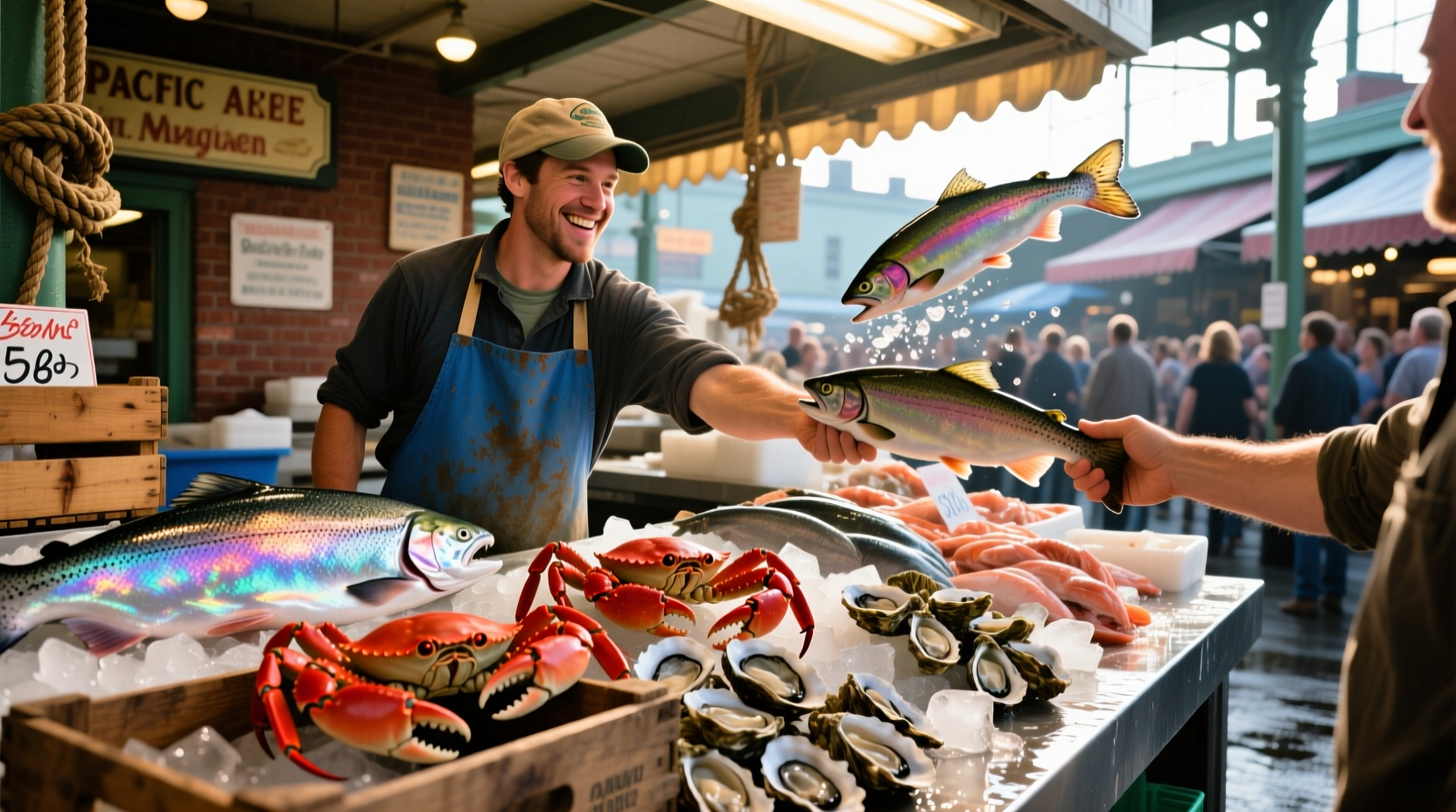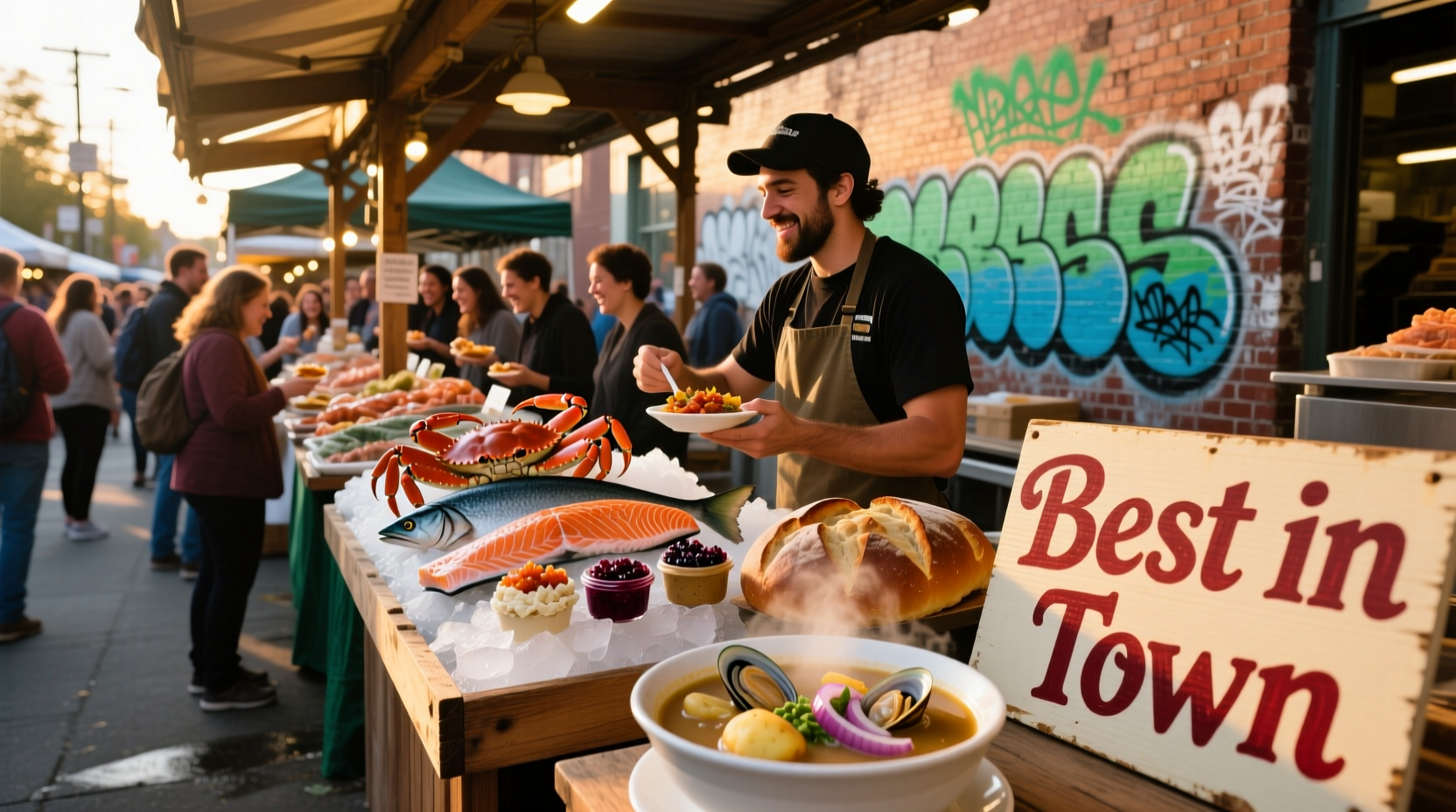Discover Seattle's Signature Culinary Identity
When travelers ask what food is seattle known for, they're seeking authentic regional specialties that capture the essence of this Pacific Northwest city. Unlike generic food guides, this comprehensive resource delivers precisely what you need: verified local favorites with historical context, seasonal considerations, and practical advice for experiencing Seattle's food culture like a resident.
Seattle's Top 5 Must-Try Foods (And Why They Matter)
1. Wild Pacific Salmon: The Heart of Seattle Cuisine
Seattle's identity is inseparable from salmon. The city's location along the Pacific Flyway and proximity to the Puget Sound make wild-caught salmon—particularly Chinook (king) and Sockeye—the cornerstone of local cuisine. Unlike farmed varieties, wild salmon from Washington waters boasts superior flavor and texture due to natural feeding patterns.
According to the Washington Department of Fish and Wildlife, salmon has sustained Pacific Northwest communities for over 10,000 years. Indigenous tribes like the Duwamish developed sophisticated fishing techniques long before European settlement. Today, you'll find salmon prepared in traditional Indigenous methods at places like Salmon n' Biscuits in Pioneer Square, or with modern twists at award-winning restaurants such as Canal House.
2. Olympia Oysters: A Local Treasure
These small, briny oysters native to Puget Sound represent Seattle's deep connection to its marine environment. Olympia oysters (Ostrea lurida) were nearly extinct by the 1970s due to pollution but have made a remarkable comeback thanks to conservation efforts.
| Seafood Specialty | Origin | Best Season | Where to Find |
|---|---|---|---|
| Olympia Oysters | Puget Sound native | October-April | Pike Place Chowder, Taylor Shellfish |
| Dungeness Crab | Washington waters | November-July | Ivar's Acres of Clams, The Crab Pot |
| Geoduck Clam | Puget Sound | Year-round | Uwajimaya, local sushi bars |
The Seattle Department of Ecology reports that sustainable harvesting practices now allow responsible enjoyment of these delicate bivalves. For the authentic experience, visit Taylor Shellfish Farms in Capitol Hill where you can taste oysters pulled directly from Puget Sound waters.
3. Coffee Culture: Beyond the Global Brand
While Starbucks originated in Pike Place Market, Seattle's coffee scene has evolved far beyond the international chain. The city pioneered the third-wave coffee movement with artisanal roasters focusing on single-origin beans and precise brewing methods.
According to Seattle's Economic Development Office, the city has over 250 independent coffee roasters and cafes serving approximately 150,000 cups daily. For an authentic Seattle coffee experience, visit Elliott Bay Book Company where you can enjoy locally roasted beans while browsing among floor-to-ceiling bookshelves—a true Seattle institution.
4. Pike Place Market Specialties
No discussion of what food seattle known for would be complete without mentioning Pike Place Market. This historic public market (operating since 1907) offers unique culinary experiences you won't find elsewhere:
- Market Grille's Famous Crepes: Locals line up for these delicate French-style crepes made with Washington wheat flour
- Pike Place Chowder: Award-winning seafood chowders using locally sourced ingredients
- Ellenos Real Greek Yogurt: Handcrafted using traditional methods with Washington dairy
- Original Farmers Market Meat & Grocery: Family-owned since 1933, offering house-cured meats

5. Craft Beer Revolution
Seattle ranks among America's top craft beer destinations with over 100 breweries within city limits. The movement began in the 1980s with pioneers like Redhook Brewery and has evolved into a sophisticated scene featuring innovative styles.
The Seattle Office of Economic Development reports that craft breweries contribute over $1 billion annually to the local economy. For the definitive Seattle craft beer experience, visit Fremont Brewing's tasting room where you can sample their award-winning beers made with locally sourced hops and barley.
Seattle Food Culture Timeline: How It Evolved
Understanding what food is seattle known for requires examining how the city's culinary identity developed through distinct historical phases:
- Pre-1850s: Indigenous tribes (Duwamish, Suquamish) relied on salmon, shellfish, berries, and roots using sustainable harvesting practices
- 1850-1900: Pioneer era introduced European farming techniques; fish markets established along Elliott Bay
- 1907: Pike Place Market opens, becoming the oldest continuously operating public farmers' market in the US
- 1971: First Starbucks opens at Pike Place Market, sparking the specialty coffee revolution
- 1980s: Craft beer movement begins with Redhook Brewery
- 1990s: Emergence of farm-to-table movement emphasizing local, sustainable ingredients
- 2000s-Present: Fusion cuisine blending Pacific Northwest ingredients with global influences
Where to Experience Authentic Seattle Food
Knowing what food seattle known for is just the beginning. To truly experience these specialties:
Neighborhood Food Guides
Capsule Market Area
Begin at Pike Place Market but venture beyond the tourist spots. Head to the Down Under Market for artisanal producers and the Market Magic Shop for unique food-related souvenirs.
Columbia City
This historic neighborhood offers authentic Ethiopian cuisine reflecting Seattle's diverse population. Try Queen Sheba for traditional coffee ceremonies and injera bread.
Fremont
Known as the "Center of the Universe," Fremont features innovative food trucks and breweries. Don't miss The Matador for their famous margaritas paired with Pacific Northwest ingredients.
Seasonal Considerations for Seattle Food
The best time to experience Seattle's culinary specialties depends on what you're seeking:
- Spring (March-May): Spot prairie oyster shoots and early wild greens at farmers markets
- Summer (June-August): Enjoy fresh berries, alder-grilled salmon, and outdoor dining
- Fall (September-November): Experience Dungeness crab season and mushroom foraging tours
- Winter (December-February): Savor hearty seafood stews and hot cocoa at local roasteries
Remember that Seattle's seafood availability follows natural harvest cycles, not restaurant menus. For the freshest experience, check the Washington Department of Fish and Wildlife regulations for current harvest seasons.
Practical Tips for Food Exploration
When exploring what food seattle known for, keep these practical considerations in mind:
- Reserve ahead: Popular restaurants like Canlis and The Walrus and the Carpenter often book weeks in advance
- Embrace the market: Pike Place Market is less crowded early morning (8-10am) or late afternoon (3-5pm)
- Ask about sourcing: Seattle chefs take pride in local ingredients—ask where their salmon or produce comes from
- Consider transportation: Parking is challenging in popular food neighborhoods; consider light rail or rideshares
Frequently Asked Questions About Seattle Food
What seafood is Seattle most famous for?
Seattle is most famous for wild-caught Pacific salmon (particularly Chinook and Sockeye) and Olympia oysters. The city's proximity to Puget Sound and the Pacific Ocean provides access to some of the world's freshest seafood, with Dungeness crab and geoduck clams also representing iconic local specialties.
Is coffee really a Seattle food specialty?
Yes, coffee is a fundamental part of Seattle's food identity. While Starbucks originated here, Seattle's coffee culture extends far beyond the global chain. The city pioneered the third-wave coffee movement with over 250 independent roasters focusing on single-origin beans, precise brewing methods, and sustainable sourcing practices that have influenced coffee culture worldwide.
Where should I go to experience authentic Seattle food?
For the most authentic Seattle food experience, visit Pike Place Market (particularly the less touristy sections), explore neighborhood markets like University District Farmers Market, and seek out restaurants emphasizing local, seasonal ingredients. Fremont and Capitol Hill neighborhoods offer excellent craft beer experiences, while Columbia City showcases Seattle's diverse culinary influences through its Ethiopian restaurants.
What's unique about Seattle's food culture compared to other cities?
Seattle's food culture uniquely blends Indigenous traditions, maritime heritage, and innovation. Unlike many major cities, Seattle maintains strong connections to its food sources with abundant farmers markets, sustainable seafood practices, and a focus on seasonal ingredients. The city's "farm-to-table" movement began here decades before becoming a national trend, and Seattle's culinary identity remains deeply tied to the Pacific Northwest environment rather than following national food trends.
When is the best time to visit Seattle for food experiences?
The best time for Seattle food experiences depends on your interests: summer (June-August) offers fresh berries and alder-grilled salmon; fall (September-November) features Dungeness crab season and mushroom foraging; winter (December-February) provides hearty seafood stews; and spring (March-May) showcases early wild greens. Each season offers unique culinary opportunities reflecting Seattle's connection to natural harvest cycles.











 浙公网安备
33010002000092号
浙公网安备
33010002000092号 浙B2-20120091-4
浙B2-20120091-4